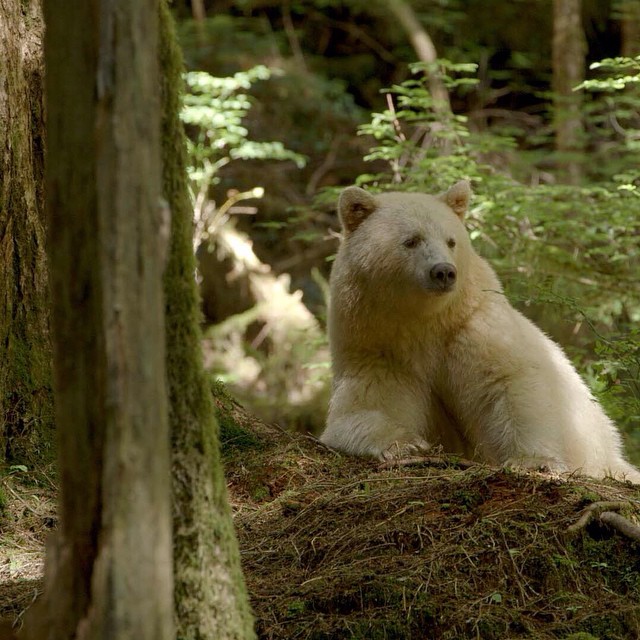Canada’s Great Bear Rainforest is home to an abundance of amazing wildlife, but there’s one group of animals that’s particularly special. They’re big, fluffy, and deliciously cream-colored – it’s the spirit bears.
A rare black bear variant
Found primarily in the aforementioned Great Bear Rainforest on Canada’s north and central coast, spirit bears – also referred to as Kermode bears – are actually a white-furred variant of a subspecies of black bear, called Ursus americanus kermodei.
While the exact number of these bears isn’t clear, Christina Service, a wildlife biologist for the Kitasoo/Xai’xais First Nation Stewardship Authority, told USA Today that previous estimates have ranged between 100 and 500.
Spirit bears are also considered culturally and economically important to the Kitasoo/Xai’xais First Nation. As the website of Spirit Bear Lodge, a Kitasoo/Xai’xais-run ecotourism operator, explains, “The creator Raven wanted to remind the Kitasoo Xai’xais Peoples of a time when this land was covered in ice, so he decided to turn one in ten black bears white. The white bear reminds us to be thankful for the lush and bountiful land of today.”
Why are spirit bears white?
While it would be easy to assume from a distance that spirit bears are black bears with albinism, they still have pigment in some places, like their eyes. This means that they’re considered leucistic.
It’s the result of a variant (also called an allele) of the mc1r gene, which is involved in the production of the pigment melanin. As this particular variant is recessive, it means that a black bear has to inherit two copies of (be homozygous for) it – one from its mother and one from its father – in order to end up with the characteristic spirit bear white fur.
That’s also the reason why two black-furred bears can end up producing a white-furred cub; the trait doesn’t show up in carriers, as they only have one copy.

Their very boopable black snoots tell us that spirit bears are white because of leucism, not albinism.
As for why evolution has kept this trait as opposed to giving it the boot, no one really knows for sure, though it’s previously been proposed that it first appeared and was then maintained by two processes known as genetic drift and positive-assortative mating.
However, a recent study looking into the presence of the white-fur-causing allele in the spirit bear population, covering an over 18,000 square-kilometer (6,950-square-mile) region of coastal British Columbia, found that its frequency was much lower than previously estimated. The authors write that this “calls into question” those previous theories about how the variant has been maintained over time.
But there’s more to the findings than attempting to find out how the spirit bears’ white fur popped up in the first place. The study also identified multiple regions where the allele is more frequent that lie outside of protected areas. With potential threats from logging and industry in these areas, as well as a drop in the number of salmon (an important food source for spirit bears) and an uptick in the number of grizzly bears in the areas, it’s key to have this kind of knowledge in hand when it comes to conserving these rare and iconic bears for years to come.
Source Link: Meet Spirit Bears: Like A Black Bear, But The Rarer, Fluffy Marshmallow Version